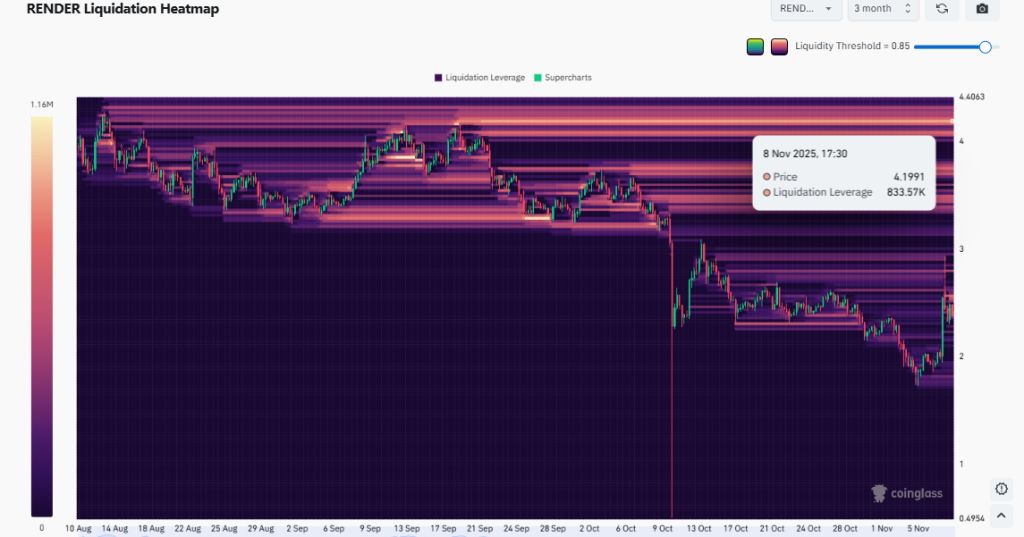The Fed’s hawkish rate cuts unveil the illusion of liquidity: the real risks for global assets in 2025–2026
The article analyzes the current uncertainty in global economic policies, the Federal Reserve's interest rate cut decisions and market reactions, as well as the structural risks in the financial system driven by liquidity. It also explores key issues such as the AI investment boom, changes in capital expenditures, and the loss of institutional trust. Summary generated by Mars AI This summary was generated by the Mars AI model, and the accuracy and completeness of its content is still undergoing iterative updates.
The significant correction coincided with the quantitative easing (QE) cycle—when the Federal Reserve intentionally extended the maturity of its asset holdings to suppress long-term yields (an operation known as "Operation Twist" as well as QE2/QE3).

Powell's "driving in the fog" metaphor is no longer limited to the Federal Reserve itself, but has become a portrayal of today's global economy. Whether policymakers, businesses, or investors, all are groping forward in an environment lacking clear visibility, relying only on liquidity reflexes and short-term incentive mechanisms.
The new policy regime exhibits three characteristics: limited visibility, fragile confidence, and liquidity-driven distortions.
The Fed's "Hawkish Rate Cut"
This 25 basis point "risk management" rate cut, bringing the rate range down to 3.75%–4.00%, is less about easing and more about "preserving optionality."

With two diametrically opposed opinions present, Powell sent a clear signal to the market: "Slow down—the visibility is gone."

Due to the data blackout caused by the government shutdown, the Fed is almost "flying blind." Powell's hint to traders was very clear: There is no certainty about whether rates will be announced in December. Rate cut expectations quickly receded, the short end of the yield curve flattened, and the market is digesting a shift from "data-driven" to "data-missing" caution.
2025: The Liquidity "Hunger Games"
Repeated central bank interventions have institutionalized speculation. Now, it is not productivity but liquidity itself that determines asset performance—this structure leads to ever-expanding valuations while real-economy credit weakens.
The discussion further extends to a sober assessment of the current financial system: passive concentration, algorithmic reflexivity, retail options mania—
· Passive funds and quantitative strategies dominate liquidity, with volatility determined by positioning rather than fundamentals.
· Retail call option buying and Gamma squeezes in the "Meme sector" create synthetic price momentum, while institutional funds crowd into an increasingly narrow group of market leaders.
· The host calls this phenomenon the "financial version of the Hunger Games"—a system shaped by structural inequality and policy reflexivity, forcing small investors toward speculative survivalism.
2026 Outlook: The Boom and Hidden Risks of Capital Expenditure
The AI investment wave is pushing "big tech" into a post-cycle industrialization phase—currently driven by liquidity, but facing leverage sensitivity risks in the future.
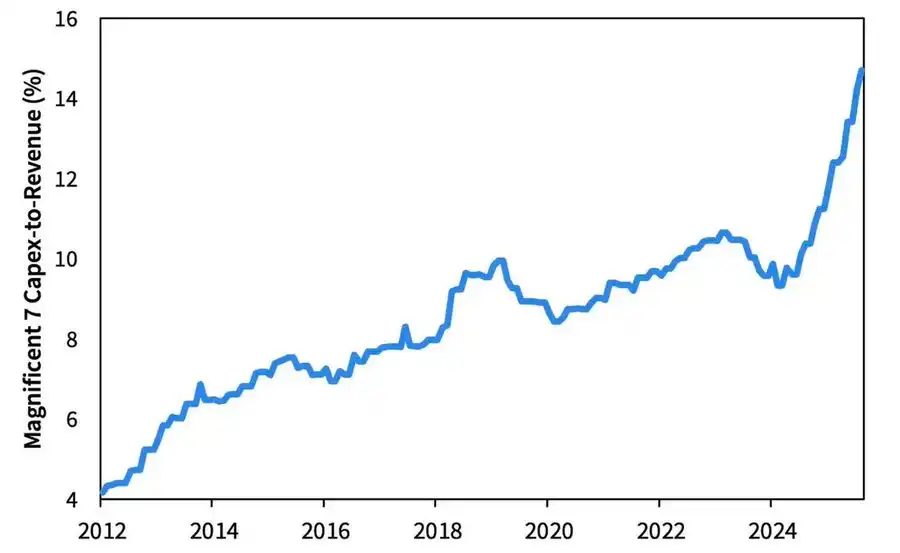

Corporate profits remain impressive, but the underlying logic is shifting: the former "asset-light cash machines" are transforming into heavy capital infrastructure players.
· The expansion of AI and data centers initially relied on cash flow, but now has shifted to record-breaking debt financing—for example, Meta's oversubscribed $25 billion bond issuance.
· This shift means profit margins are under pressure, depreciation is rising, and refinancing risks are increasing—setting the stage for a turn in the next credit cycle.
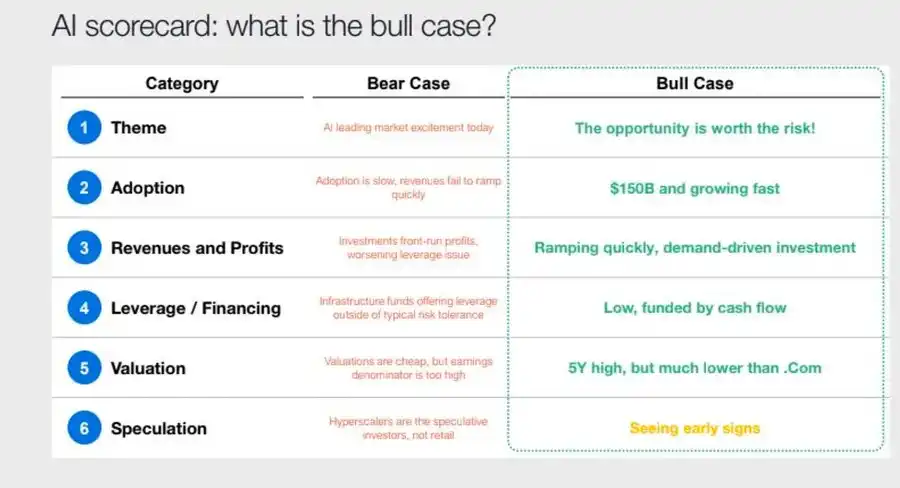
Structural Commentary: Trust, Distribution, and Policy Cycles
From Powell's cautious tone to the final reflection, a clear thread runs throughout: concentration of power and loss of trust.
Every policy bailout almost always strengthens the largest market participants, further concentrating wealth and continuously undermining market integrity. The coordinated operations of the Fed and Treasury—from quantitative tightening (QT) to short-term Treasury (Bill) purchases—have exacerbated this trend: liquidity is abundant at the top of the pyramid, while ordinary households are suffocated by stagnant wages and rising debt.
Today, the core macro risk is no longer inflation, but institutional fatigue. The market surface remains prosperous, but trust in "fairness and transparency" is eroding—this is the true systemic fragility of the 2020s.
Macro Weekly | Updated November 2, 2025
This issue covers the following:
· This week's macro events
· Bitcoin heat indicators
· Market overview
· Key economic indicators
This Week's Macro Events
Last week
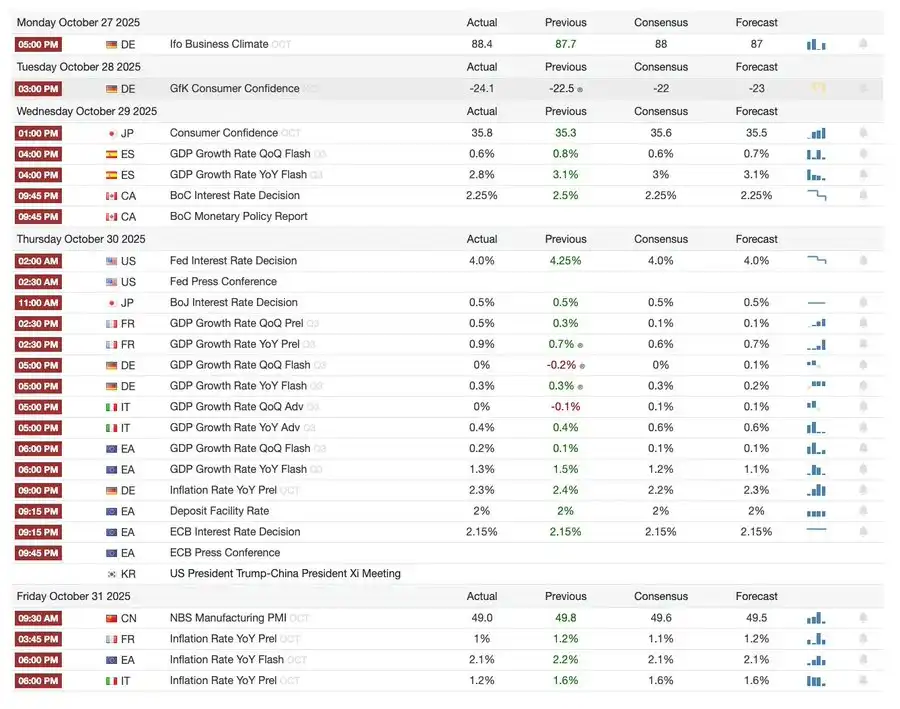
Next week


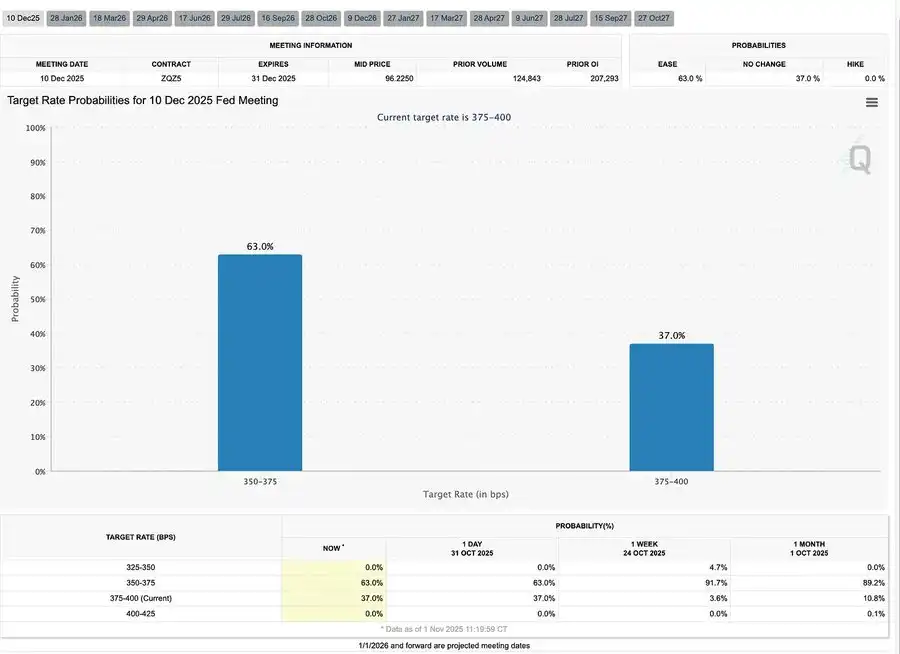
Bitcoin Heat Indicators
Market Events and Institutional Developments
· Mt. Gox has extended its repayment deadline to 2026, with about $4 billion in bitcoin still frozen.
· Bitwise Solana ETF reached $338.9 million in AUM in its first week, setting a new record, even as the SEC remains deadlocked on approval.
· ConsenSys plans to IPO in 2026, with underwriters including JPMorgan and Goldman Sachs, targeting a $7 billion valuation.
· Trump Media Group launches Truth Predict—the first prediction market co-developed by a social media platform and Crypto.com.
Financial and Payment Infrastructure Upgrades
· Mastercard acquires crypto infrastructure startup Zerohash for up to $2 billion.
· Western Union plans to launch the USDPT stablecoin on Solana in 2026 and has registered the WUUSD trademark.
· Citibank and Coinbase jointly launch an institutional-grade 24/7 stablecoin payment network.
· Circle launches the Arc public testnet, attracting over 100 institutions including BlackRock and Visa.
Ecological and Platform Expansion
· MetaMask launches multi-chain accounts, supporting EVM, Solana, and soon bitcoin.
Global and Regional Developments
· Kyrgyzstan launches a stablecoin collateralized by BNB; meanwhile, Trump pardons CZ, paving the way for Binance's return to the U.S. market.
· U.S. SOL spot ETF (excluding seed capital) sees $199.2 million in inflows.
· Japan launches a fully compliant yen stablecoin JPYC, targeting an issuance scale of $65–70 billion by 2028.
· Ant Group registers the "ANTCOIN" trademark, quietly returning to the Hong Kong stablecoin race.
· AWS and Microsoft cloud service outages cause market chaos, with conflicting statements from both sides.
· JPMorgan's Kinexys blockchain completes its first tokenized private equity fund transaction, further advancing institutional adoption.
· Tether becomes one of the largest holders of U.S. Treasuries, with holdings reaching $135 billion and annualized returns exceeding $10 billion.
· Metaplanet launches a stock buyback plan to address declining net assets.
· Privacy asset trading heats up, with ZEC prices surpassing 2021 highs, though this week's gains still lag behind DASH.
· Sharplink deploys $200 million ETH on Linea to earn DeFi yields.
· As sports betting becomes a hot sector, Polymarket plans to officially launch its product in the U.S. by the end of November.
· Securitize announces a $1.25 billion SPAC merger to go public.
· Visa adds payment support for four new stablecoins across four blockchains.
· 21Shares files for a Hyperliquid ETF, with more crypto funds entering the market.
· KRWQ becomes the first Korean won stablecoin issued on the Base chain.
Market Overview
The global economy is shifting from inflation risk to confidence risk—future stability will depend on policy clarity, not liquidity.
Global monetary policy is entering a phase of limited visibility. In the U.S., the FOMC cut rates by 25 basis points to 3.75%–4.00%, exposing widening internal divisions. Powell hinted that further easing is "not a done deal." The ongoing government shutdown prevents policymakers from accessing key data, increasing the risk of policy misjudgment. Weakening consumer confidence and a slowing real estate market mean that market sentiment, rather than stimulus measures, is now steering the path of economic "soft landing."
Among G10 countries: the Bank of Canada completed its final rate cut, the European Central Bank held rates steady at 2.00%, and the Bank of Japan paused cautiously. The common challenge is how to curb economic growth amid persistent services inflation. Meanwhile, China's PMI has slipped back into contraction, indicating weak recovery, sluggish private demand, and signs of policy fatigue.
Compounded by political risk, the U.S. government shutdown threatens the normal operation of welfare programs and may delay the release of key data, undermining confidence in fiscal governance. The bond market has begun to price in lower yields and slower economic growth, but the real risk lies in the breakdown of institutional feedback mechanisms—data delays, policy indecision, and declining public trust intertwine, ultimately brewing crisis.
Key Economic Indicators
U.S. Inflation: Moderate Rebound, Clearer Path
The inflation rebound is mainly supply-driven, not demand-driven. Core pressures remain controlled, and weakening employment momentum gives the Fed room to continue cutting rates without triggering an inflation rebound.
· September inflation was up 3.0% year-on-year and 0.3% month-on-month, the fastest since January this year, but still below expectations, reinforcing the "soft landing" narrative.
· Core CPI excluding food and energy was up 3.0% year-on-year and 0.2% month-on-month, indicating stable price foundations.
· Food prices rose 2.7%, with meat up 8.5%, affected by agricultural labor shortages due to immigration restrictions.
· Utility costs rose significantly: electricity +5.1%, natural gas +11.7%, mainly driven by energy consumption from AI data centers—a new driver of inflation.
· Services inflation fell to 3.6%, the lowest since 2021, indicating that a cooling labor market is easing wage pressures.
· Market reaction was positive: stocks rose, rate futures reinforced rate cut expectations, and bond yields remained stable overall.
U.S. Demographics: A Critical Turning Point
Net immigration turns negative, posing challenges for economic growth, labor supply, and innovation capacity.
The U.S. may face its first population decline in a century. Although births still outnumber deaths, net immigration is negative, offsetting the 3 million population increase in 2024. The U.S. is facing a demographic reversal, not due to falling birth rates, but due to policy-driven declines in immigration. Short-term impacts include labor shortages and rising wages; long-term risks center on fiscal pressure and slowing innovation. Unless this trend is reversed, the U.S. may repeat Japan's aging population scenario—slower economic growth, rising costs, and structural productivity challenges.
According to AEI forecasts, net migration in 2025 will be –525,000, the first negative value in modern history.
· Pew Research Center data shows that in the first half of 2025, the foreign-born population fell by 1.5 million, mainly due to deportations and voluntary departures.
· Labor force growth has stalled, with agriculture, construction, and healthcare facing significant shortages and wage pressures.
· 28% of American youth are immigrants or children of immigrants; if immigration drops to zero, the under-18 population could fall by 14% by 2035, exacerbating pension and healthcare burdens.
· 27% of doctors and 22% of nursing assistants are immigrants; if supply declines, automation and robotics in healthcare may accelerate.
· Innovation risk: immigrants have contributed 38% of Nobel Prizes and about 50% of billion-dollar startups; if the trend reverses, America's innovation engine will be damaged.
Japan's Export Recovery: Rebound Under Tariff Shadows
Despite being dragged down by U.S. tariffs, Japanese exports have rebounded. September exports rose 4.2% year-on-year, the first positive growth since April, mainly due to reviving demand from Asia and Europe.
After months of contraction, Japanese exports returned to growth, up 4.2% year-on-year in September, the largest increase since March. This rebound highlights that despite new trade frictions with the U.S., regional demand remains strong and supply chains have adjusted accordingly.
Japan's trade performance shows that even though the U.S. has imposed tariffs on automobiles (its core export category), external demand from Asia and Europe has stabilized. The rebound in imports indicates that, driven by a weaker yen and restocking cycles, domestic demand is also seeing a mild recovery.
Outlook:
· Exports are expected to gradually recover, driven by normalization of intra-Asia supply chains and energy prices
· Persistent U.S. protectionism remains the main obstacle to maintaining export momentum in 2026.
Disclaimer: The content of this article solely reflects the author's opinion and does not represent the platform in any capacity. This article is not intended to serve as a reference for making investment decisions.
You may also like
INJ Price Prediction 2025: Will Injective’s Multi-year Support Ignite a Massive 2025 Rally?
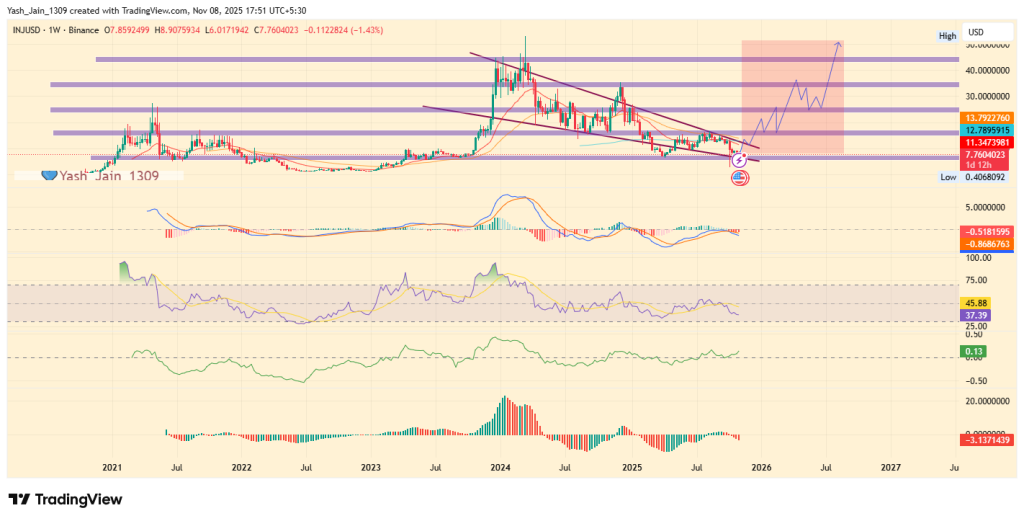
Filecoin (FIL) Price Breakout Could Ignite a 1,700% Rally, Predicts Top Trader
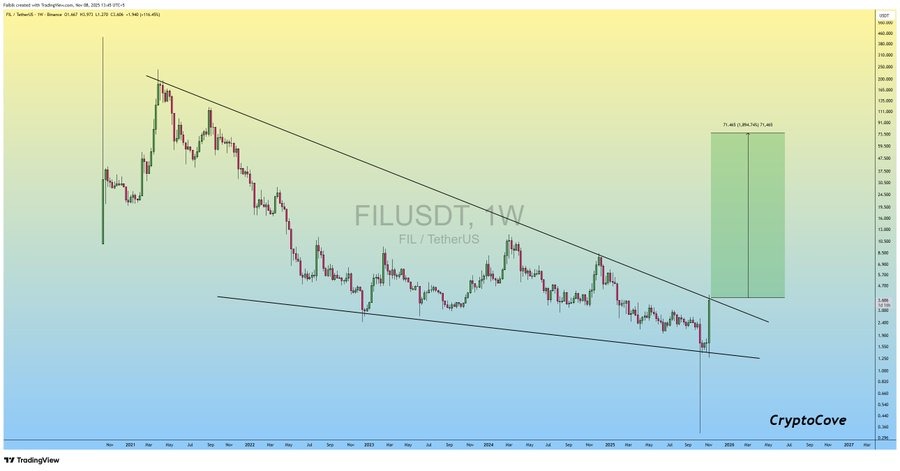
RENDER Price Prediction 2025: How Far Can RENDER Rally If $4.19 Flips?
